



Variously known as the Avro 748, Hawker Siddeley 748, Hindustan 748, BAe 748 or just Hawkers she was always lovingly known to all as ‘the Budgie’. Designed as a DC-3 replacement, 381 of these versatile aeroplanes had been built in the UK and India when production finally stopped at the end of 1988.

Designed back in the late 1950s by A V Roe at Woodford the Avro 748 was to compete for that holy grail of aircraft design, the DC-3 replacement. Its only serious competitor in the UK was the Handley Page Herald. The latter had however started off with a severe disadvantage as it was originally designed to be powered by four piston engines whilst the 748 was powered by two modern Rolls Royce Dart turboprops from the outset. Despite a redesign to turboprop power by the Handley Page team the Herald never really lived up to its promise and sales were low with only 50 being built. Major competition for the 748 came however from across the North Sea in the Netherlands where Fokker had designed their F-27 Friendship, also Dart engine powered. First flying in 1955, five years before the 748, Fokker would go on to build 586 examples of their best-selling aeroplane with the first being delivered in 1958.

The Avro 748 first flew from Woodford on 24 June 1960 and was designed to carry around 50 passengers according to cabin layout. Many would see service as combis with passengers and freight being carried at the same time, with passenger capacity reduced .To get a sales edge on their main competitor produced by Fokker, the Avro team designed the 748 for short take off and landing operations (STOL) using rough field strips. This required both a strong undercarriage and a sturdy airframe. In 1961 the RAF evaluated both the Herald and the Avro 748 as potential successors for their fleet of Valettas. It was generally thought that the Herald offered more potential as a replacement. At the time however the government was urging the multitude of British aircraft manufacturers to merge and form two large units - Hawker Siddeley or BAC. Handley Page refused to merge and as a result the government refused to place any further contracts with the Radlett firm and the Avro 748 won the RAF order.
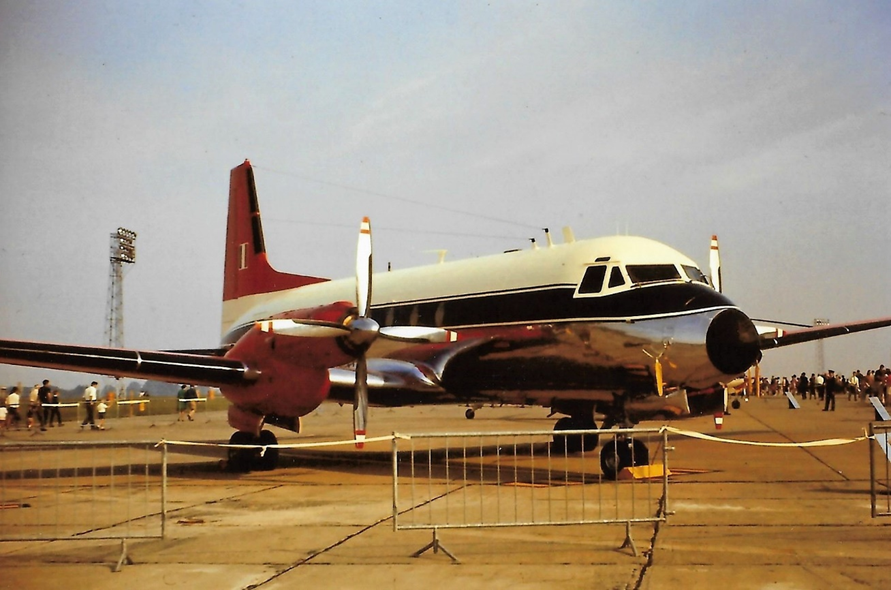
At the time of the run up to the 748’s first flight the Indian Air Force was looking around for an aircraft to have licence-built back in India to replace its Dakotas. The three twin turboprop competitors were all looked at. The Herald was discarded and the choice narrowed down to the F-27 or the Avro 748. The Friendship had employed the British REDUX bonding system in some of its construction and the Indian Air Force realised this needed particular environmental conditions and would require air conditioned factories. On this basis the F-27 was ruled out and an agreement was made with Avro for the licence build of the 748 by Hindustan Aeronautics Ltd (HAL). Just over eighteen months after the British Prototype flew the first Indian-built machine took to the sky in November 1961. This was the third 748 to fly. HAL would build 89 examples most of which went to the Indian military but 17 entered service with Indian Airlines.
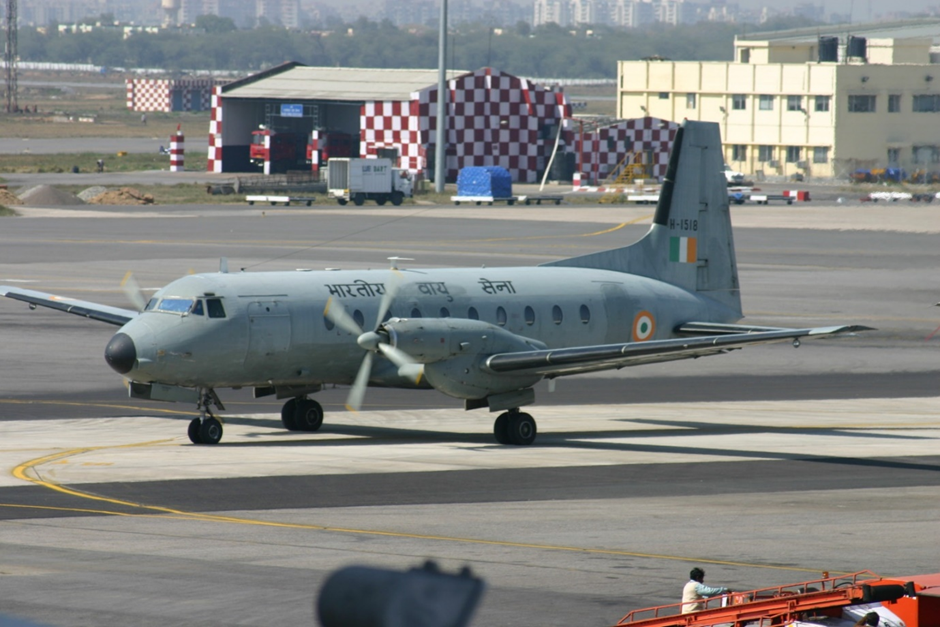
The two British-built prototypes led interesting lives with the first being retained by Avro and converted into a military transport to be known as the HS 780 Andover. This was in response to the RAF requirement for a new transport plane and we will look at this later. The second prototype G-ARAY was leased to the RAF for evaluation and from this a small order was placed for the 748 for use as a VIP transport. On returning from the RAF the aeroplane flew across the Atlantic on lease to Aeropostal Airlines of Venezuela. From there she travelled west on lease to Varig of Brazil followed by a spell in the Caribbean with LIAT before a long trip east to the Philippines and a lease with Philippine Airways. Returning to Hawker Siddeley (as Avro had now become) back in the UK, she was sold in 1967 to Danish airline Falck, went on to Maersk Airlines before returning home having been sold to Dan Air in 1971. She had at last found a permanent home and flew with Dan Air for the rest of her active life before being withdrawn from use in 1989. Dan Air had quite a love affair with the Budgie operating 23 of them at one time or another.
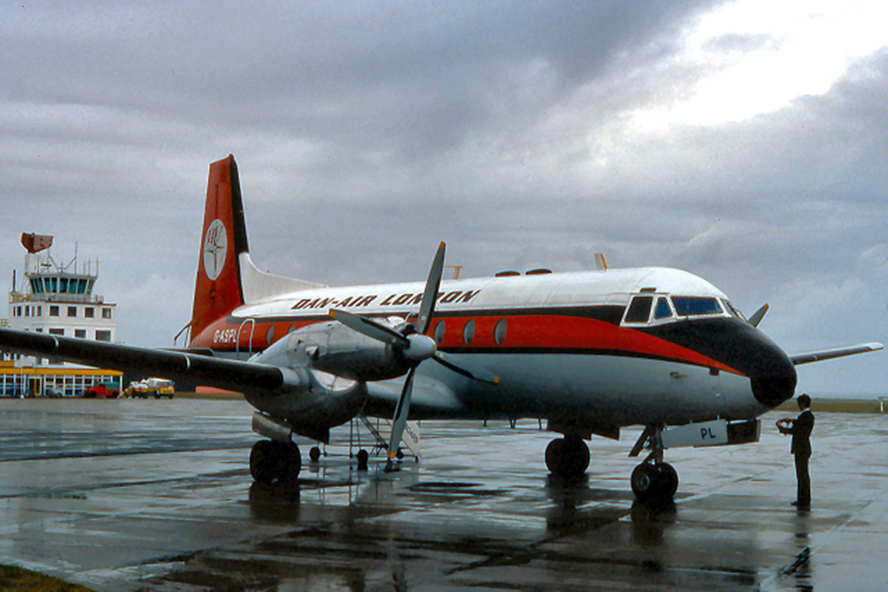
One of the first buyers of the production Avro 748 was Skyways, a UK airline that operated a coach air service from London to Paris. In order to undercut the high prices on the direct London-Paris air route Skyways passengers would start their journey at Victoria coach station boarding a coach for Lympne airport in Kent. Once there they would board their Skyways 748 for the short hop across the Channel to Beauvais airport just outside Paris. A coach would be waiting to take them into the French city. The cost for this rather long-winded trip was only £9 - £13, considerably lower than the direct air fare. Being designed as a rugged STOL aeroplane the 748 had basic systems that would prove very reliable and easily maintained even on the remotest of airfields and sold well to airlines operating into places other than major airports. Latin/South America and Canada were big customers for the sturdy Budgie.
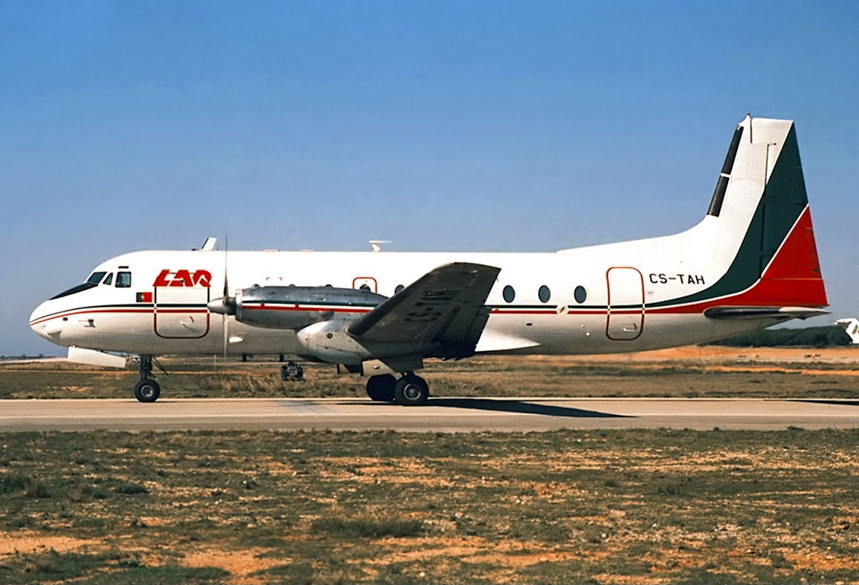
Sales were going well around the world and by 1976 a total of 312 examples of the 748 had been built with 259 of them going overseas. Indian Airlines had become the largest operator of the type with 26 Budgies on their books. Going back to that first prototype which had been converted into the Andover for the RAF, this had required a redesign of the rear fuselage incorporating a tail loading ramp and a novel arrangement for the main undercarriage which enabled it to ‘kneel’ to allow easier access to the ramp for large freight items. The RAF ordered 31 examples and the first one flew in December 1963. These would be the only orders for the Andover but when they were withdrawn from RAF service several went to the Royal New Zealand Air Force and a number also ended up as civilian freighters operating mainly in Africa.
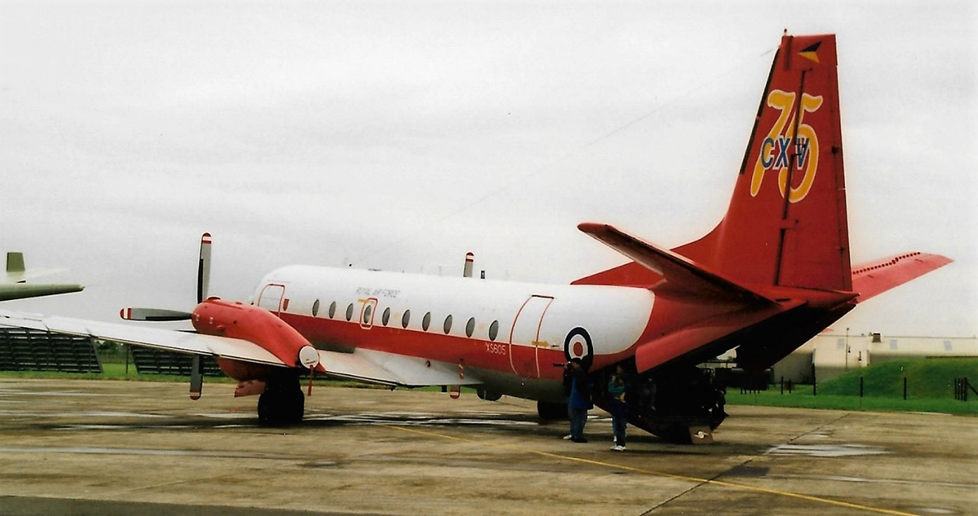
Whilst the RAF were the only air arm to order the Andover, several 748s found their way into military hands as transport or VIP aircraft. Countries such as Argentina, Brazil, Chile, Zambia, India, Thailand, Belgium, Australian Air Force and Navy plus of course our own Queen’s Flight which had a pair of 748s or, as the RAF called them, Andover CC2s in service. Several of these countries continue to operate the 748 to this day. During the production run of the 748 many updates and improvements were made including more powerful engines and higher payload weights. Some of the 748s boasted large cargo doors on the side and some were produced as pure freight variants. Over in India HAL converted two with a large radar dome into Airborne Early Warning planes. In Canada a few even saw the cabin interior being replaced by large tanks to haul diesel and fuel oil to remote villages, these tanks enabled an uplift of 7500 litres of fuel.
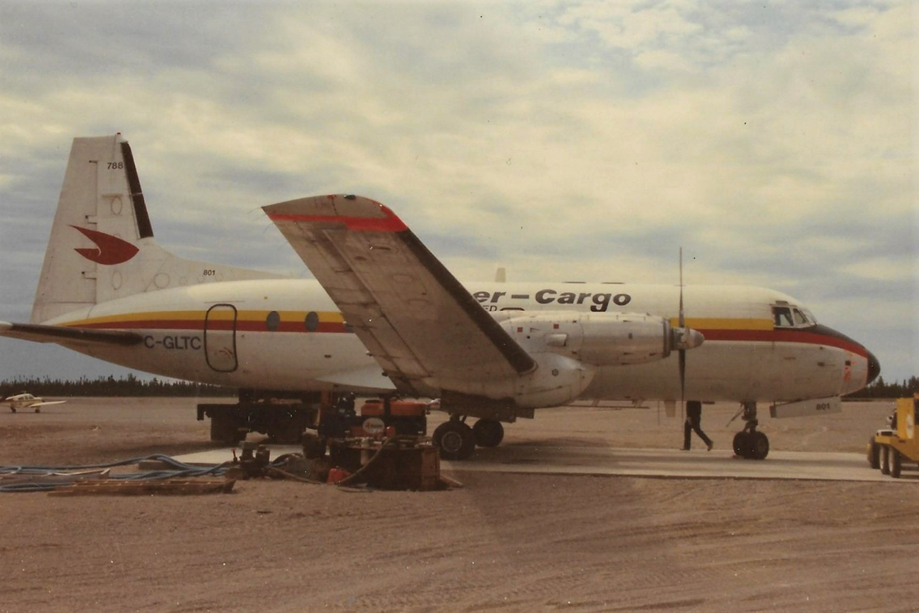
One sale came as a surprise to Hawker Siddeley when Philippine Airlines one of the largest operators of the Fokker F-27, the major competitor for the 748, decided to replace their fleet of Friendships with 748s. Twenty-one 748s would see service in the Philippines. By 1988 sales had dried up and BAe (who were formed from the merger of Hawker Siddeley with BAC in 1977) closed the production line with the last British-built example leaving the Woodford factory in December 1988. For many years the Budgies could still be seen around the world at airports big and small. Slowly but surely they began to disappear from passenger service but still maintained a large presence in freight and overnight mail services. The last passenger-configured aeroplanes operating scheduled services were the four owned by Canadian airline Air North who operated them on their routes in the Yukon. In 2017 the final passenger service was flown before modern ATRs took over the 748’s routes. Air North kept two ‘Hawkers’ for freight and charter services so the shrill of the Darts can still be heard in the Canadian wilderness.
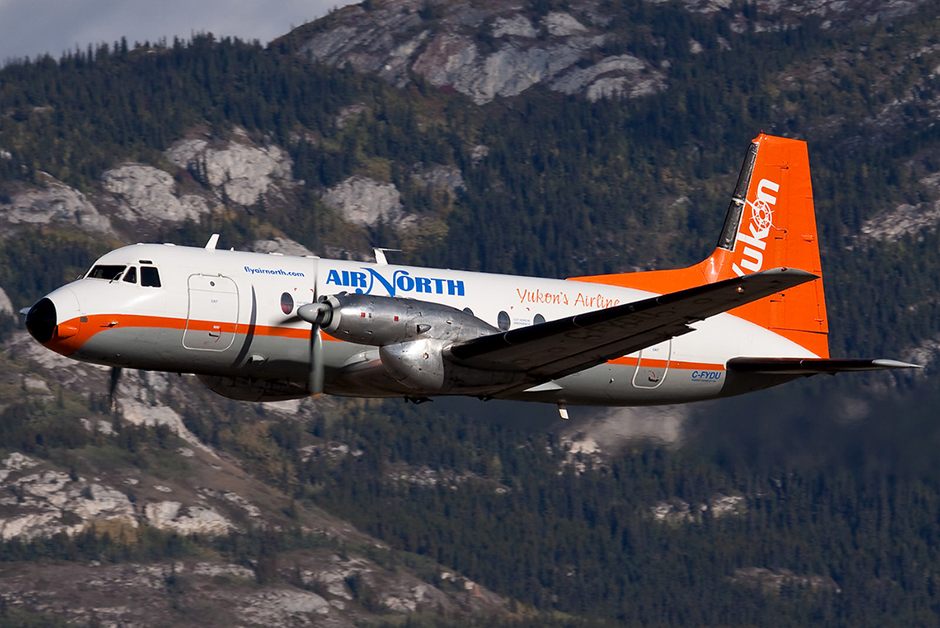
Here in the UK the HS 748 hung on for several years with small start up airlines (many of whom shut down just as quickly) or flying overnight mail with such companies as Emerald. One start up airline using 748s that did grow was Ryanair who used a Budgie on their flights into Luton from Ireland. As the 748 began to fade from the scene many ended up at Southend before leaving for remote parts of the world. Two ex-Australian examples arrived there many years ago and were going to be the centrepiece of a new airport hotel. There was a change of plan and the two planes sat in the long grass with anything usable being removed from them to keep their sisters flying. The two hulks are still there and were advertised on Facebook marketplace a few weeks ago as free to anybody who wanted them. Buyer collects!
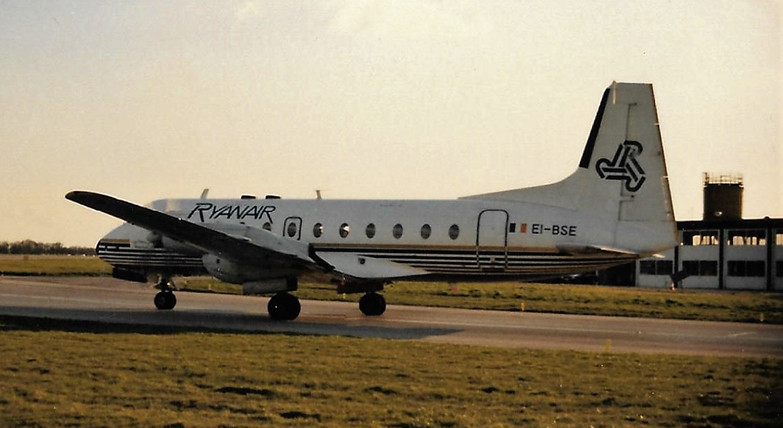
With production of the 748 now closed BAe had already been looking into how it might develop this successful design. Due to the continuing rise in fuel prices and limits on aircraft noise, a radical redesign took place to replace the early Dart turboprops which were known for being noisy with something more efficient. With a lengthened fuselage and larger wing the new aeroplane was powered by the Pratt and Whitney PW126 engine driving six-bladed propellers making it both fuel efficient and quiet. The new aeroplane was known as the BAe ATP (Advanced Turbo Prop) and first flew in 1986 entering service in 1988 with launch customer British Midland. Any hopes BAe had of capturing the same slice of market they had with the 748 were however not to be. By the time the ATP entered service the DHC Dash-8 and the French ATR42 and big brother the ATR72 were already selling well and just 65 ATPs were built over an eight-year production span.
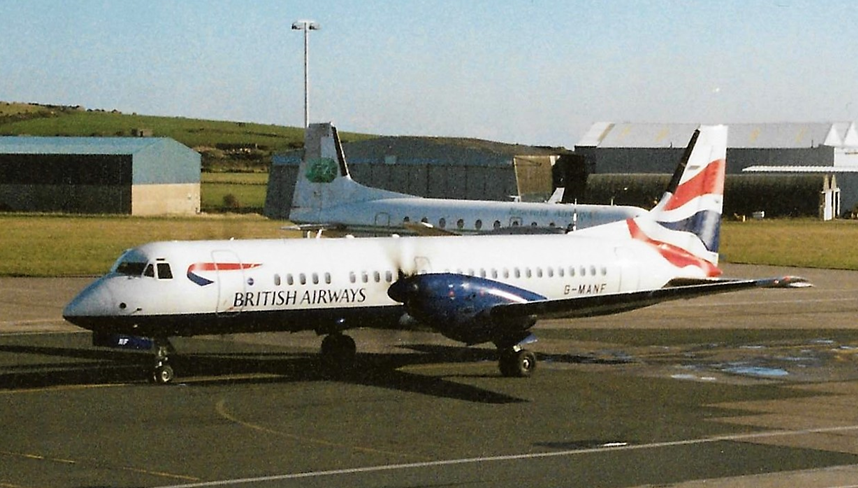
British Airways operated a large number of ATPs on its Scottish services and subsidiary airline Manx Airlines also operated a number into the Isle of Man. When BA pulled out of the Scottish regional routes after making Loganair a BA franchise operator, many of the ATPs were sold. In 2001 BAe had produced the freighter ATP conversion using the old HS 748 freight door and several were built for Swedish freight airline West Air Sweden. This conversion allowed the ATP-F as the new plane was called to carry 30 per cent more cargo than the 748 for just 10 per cent increase in operating costs. Like the 748 before it, as ATP passenger aircraft were withdrawn they were either scrapped or converted to carry freight. Today West Atlantic Airlines operate the world’s largest fleet of ATP freighters with around 12 ATP-Fs still in service. There are no longer any passenger ATPs in use.
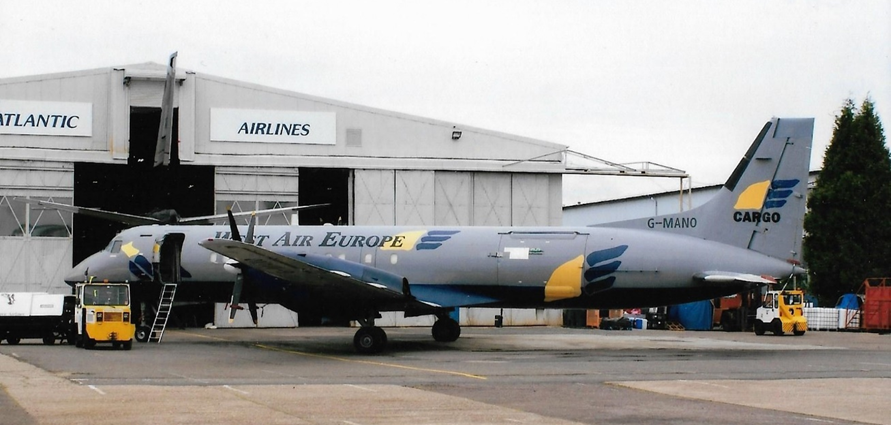
Now a very rare sight in any guise. For 36 years the 748 family graced our skies but like so many great examples of the British airliner industry, is just a fading memory.
‘till the next time. Keith
Registered Charity No. 285809